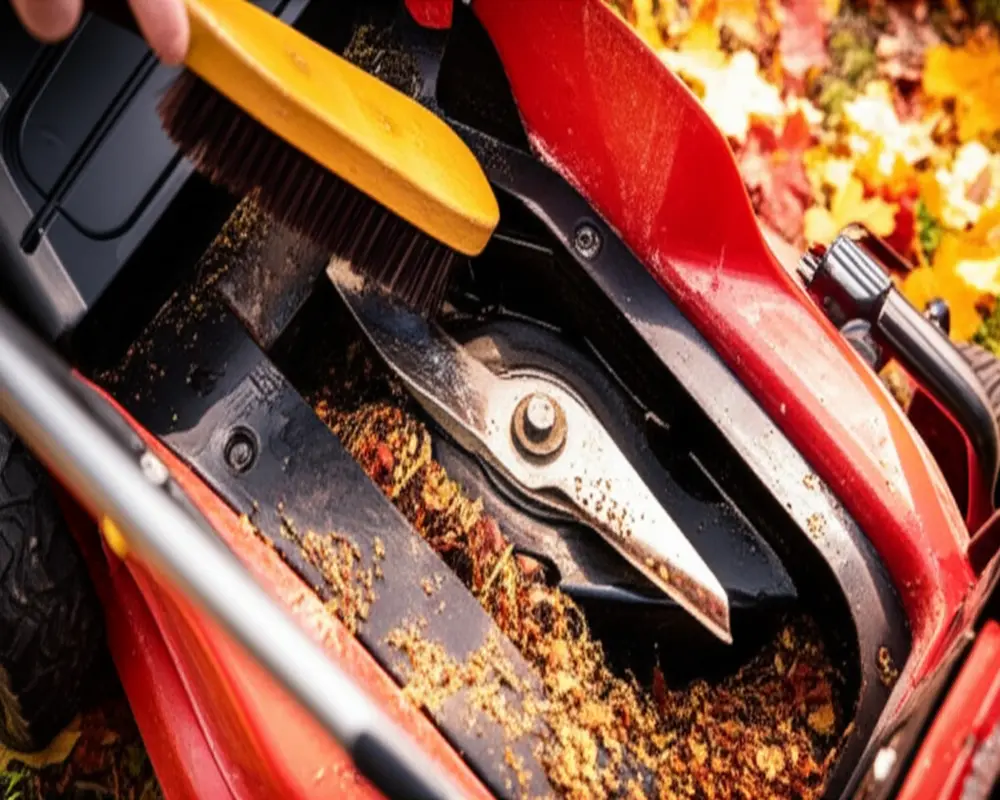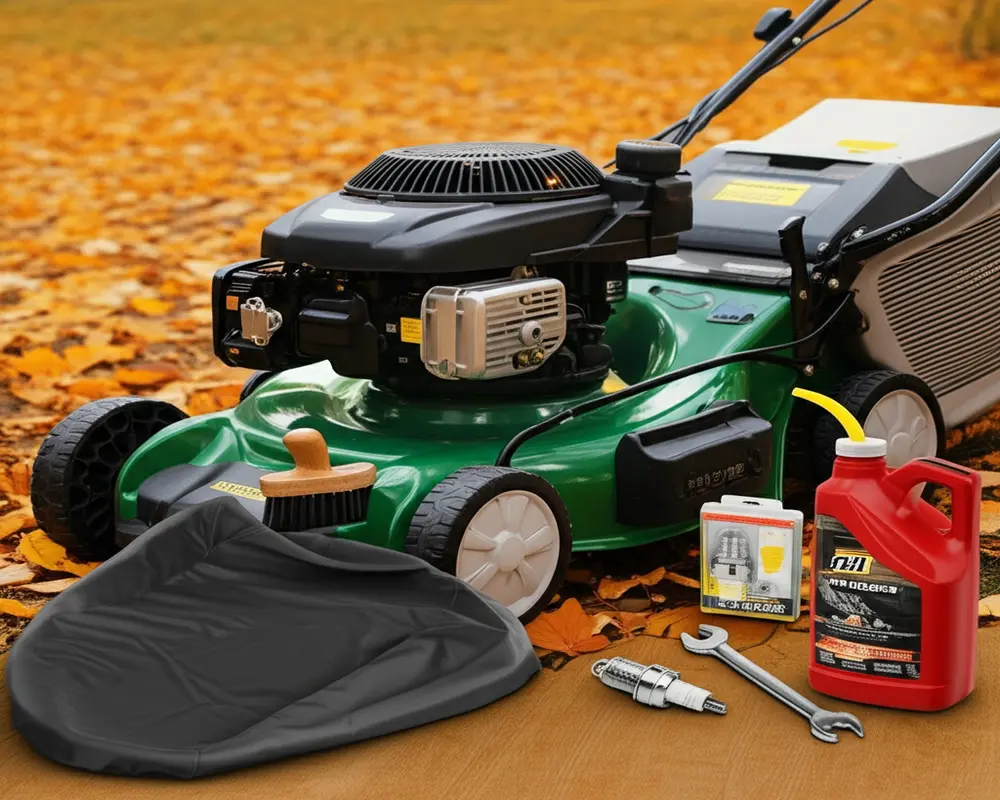Fall Lawn Mower Maintenance: Ultimate Guide for Winter Prep 2025
Don’t let your lawn mower suffer through winter! Taking a few crucial steps this fall to maintain and winterize your lawn mower will save you money and headaches down the line. Proper fall lawn mower maintenance not only extends the lifespan of your equipment but also preserves its performance, prevents costly repairs, ensures an easy start come spring, and keeps your warranty valid.
Thank you for reading this post, don't forget to subscribe!This comprehensive guide covers everything you need to know to prepare your mower for winter, whether you have a gas-powered, electric corded, or battery-operated model. From the optimal timing and essential safety precautions to detailed step-by-step winterization procedures and proper storage tips, we’ve got you covered.
When to Winterize Your Lawn Mower
The best time to winterize your lawn mower is after your last mow of the season and before the first hard freeze in your area. This timing is critical to prevent fuel degradation and moisture buildup inside your mower, which can cause damage during storage. Winterizing too early may result in unnecessary wear, while waiting too long can make the process less effective.
Safety First: Essential Precautions Before You Begin
Before diving into maintenance tasks, prioritize safety. Always disconnect the power source: remove the spark plug on gas mowers, unplug corded electric models, or remove the battery on battery-powered mowers. Allow the engine to cool completely to avoid burns. Wear protective gloves and eye protection, and perform all work in a well-ventilated area on a stable, flat surface.
Tools & Supplies Checklist
Gathering the right tools and supplies beforehand ensures a smooth maintenance session. You’ll need a wrench or socket set, screwdrivers, wire brush, rags, funnels, and an oil drain pan. Cleaning supplies include a scrub brush, scraper, garden hose, and degreaser. For gas mowers, fresh engine oil, a replacement spark plug, fuel stabilizer, and air filter are essential. Blade maintenance requires a sharpener and balancer. For electric riding mowers, a battery charger is helpful. Don’t forget rust-preventative spray, a breathable cover, and containers for responsible disposal of fuel and oil.
Step-by-Step Winterization for Gas Mowers
Proper maintenance for gas mowers involves several critical steps:
Cleaning: Remove grass clippings, dirt, and debris from the mower deck and blades using a brush or scraper. Tilt the mower carburetor side up to prevent fuel from leaking into the engine. Avoid spraying water directly onto electrical components to prevent damage.

Fuel Management: Add a quality fuel stabilizer for mowers to fresh fuel and run the engine for a few minutes to circulate the stabilizer, or alternatively, drain the fuel completely. Dispose of old fuel responsibly according to local environmental regulations. This step prevents fuel degradation and gum deposits that can clog carburetors.
Change Engine Oil: Warm up the engine to allow oil to drain more completely. Drain the old oil into an oil drain pan and refill with the manufacturer-recommended oil type and quantity. Properly recycle used oil following the guidelines by the U.S. Environmental Protection Agency.
Spark Plug: Remove and inspect the spark plug. Clean off deposits or replace the plug if worn. Applying fogging oil to the cylinder can provide extra protection against corrosion during storage.
Air Filter: Clean or replace the air filter depending on its type. Foam filters can be washed and dried, while paper filters should be replaced to maintain optimal airflow and engine performance.
Blade Care: Remove the blades, sharpen them using a sharpener, and balance for smooth operation. Replace blades if they show signs of severe damage or bending.
Lubricate Moving Parts: Apply lubricant to cables, linkages, and bearings to prevent rust and ensure smooth operation.
Battery Care (Riding Mowers): Remove the battery and store it in a cool, dry place. Use a trickle charger to maintain charge throughout winter.
Rust Prevention: Spray metal parts with rust-preventative spray to protect against moisture-induced corrosion.
Winterization for Electric & Battery Mowers
Electric and battery-powered mowers require similar but specialized care:
Thoroughly clean the mower to remove dirt and grass buildup, just like gas models. Maintain the blades by sharpening and balancing them.
Battery Maintenance: Remove the battery pack and store it in a safe, dry location. Charge the battery to the recommended level before storage and periodically recharge to maintain battery health.

For corded electric mowers, inspect the power cords for damage or wear, repairing or replacing if necessary. Lubricate moving parts according to the manufacturer’s instructions.
Proper Storage
Storing your mower correctly over winter protects it from damage and ensures readiness for spring:
Keep the mower in a dry, sheltered location such as a garage or shed. Store the mower flat on a stable surface; avoid hanging or placing on its side unless the manual specifically permits it. Use a breathable cover to shield the mower from dust and moisture without trapping condensation.

Store the mower away from chemicals and solvents that could accelerate rusting or damage plastic components.
Common Mistakes to Avoid
Even with the best intentions, some errors can undermine your fall maintenance efforts:
- Neglecting to use a fuel stabilizer or failing to drain fuel properly.
- Skipping the oil change before storage, which can leave contaminants in the engine.
- Overlooking thorough cleaning, allowing debris to cause corrosion or mechanical issues.
- Failing to maintain or remove the battery, risking damage or discharge.
- Storing the mower outdoors uncovered, exposing it to weather damage.
- Ignoring manufacturer instructions found in the owner’s manual.
Frequently Asked Questions (FAQs)
- Q: Can gas be left in the mower all winter?
- A: It’s best to either add a fuel stabilizer and run the engine to circulate it or completely drain the fuel. Gas left untreated can degrade, causing clogs and damage.
- Q: How often should I change the oil?
- A: Change your mower’s oil at least once per season, ideally during fall maintenance to ensure clean lubrication during storage.
- Q: Do I need special oil for winter?
- A: Use the oil type recommended by your mower’s manufacturer, which is suitable for the operating temperatures in your region.
- Q: What if I don’t have a garage?
- A: Store your mower in a dry, sheltered place such as a shed or covered porch, and use a breathable cover to protect it from moisture and dust.
- Q: Why won’t my mower start after winter?
- A: Common reasons include stale fuel, dirty spark plugs, clogged carburetors, or battery issues. Proper fall maintenance helps prevent these problems.
- Q: How do I choose the correct spark plug and air filter?
- A: Refer to your mower’s owner’s manual for the exact specifications. Using recommended parts ensures optimal performance and longevity.
Conclusion: Ready for Spring!
Performing fall lawn mower maintenance is an investment in your mower’s future. It protects your equipment, extends its life, and guarantees a hassle-free startup when spring arrives. Don’t wait until the first thaw—start your winter prep today to enjoy a healthy, well-maintained lawn mower season after season.
For further guidance on related gardening tools, check out our detailed article on digging spade technique, which complements your outdoor maintenance efforts.
Learn more about winter storage best practices from trusted manufacturers like Honda Power Equipment and Briggs & Stratton.
For comprehensive tips on storing your mower during the colder months, visit The Spruce’s guide.

